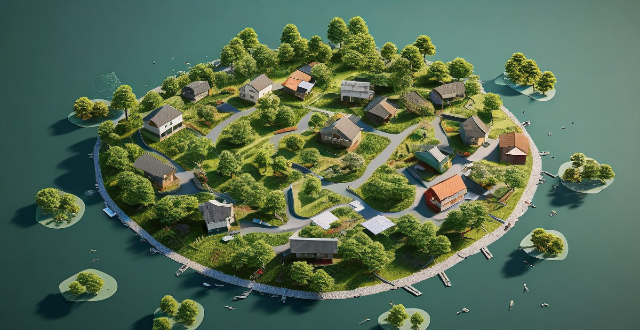The greenhouse effect, essential for Earth's habitThe greenhouse effect, essential for Earth's habittensified by human activities like has been intensified by human activities like burning fossil fuels and deforestation. This amplified effect is causing global warming, which leads to rising ocean levels through melting polar ice caps and thermal expansion of seawater. Changes in precipitation patterns also indirectly affect ocean levels by redistributing water. Addressing the causes of the enhanced greenhouse effect is vital to mitigate these impacts and protect the planet's future.

The Greenhouse Effect and Its Impact on Ocean Levels
The greenhouse effect is a natural process that warms the Earth's surface. It occurs when gases in the atmosphere, such as carbon dioxide, trap heat from the sun. This trapped heat warms the planet and makes life possible. However, human activities, especially burning fossil fuels and deforestation, have increased the concentration of these gases, leading to an enhanced greenhouse effect and global warming.
How Does the Greenhouse Effect Affect Ocean Levels?
Melting of Polar Ice Caps
One of the most significant impacts of the greenhouse effect on ocean levels is the melting of polar ice caps. As the Earth's temperature rises due to the increased greenhouse effect, it causes glaciers and ice sheets in places like Greenland and Antarctica to melt at an accelerated rate. This melted water eventually finds its way into the world's oceans, leading to a rise in sea levels.
##### Key Points:
- Increased Temperatures: Higher global temperatures cause more ice to melt.
- Ice Sheets & Glaciers: These are the primary sources of new water entering the oceans.
- Sea Level Rise: As ice melts, it raises sea levels, affecting coastal communities worldwide.
Thermal Expansion
Another way the greenhouse effect contributes to rising ocean levels is through thermal expansion. When water is heated, it expands. As global temperatures increase due to the enhanced greenhouse effect, so does the temperature of the oceans. Warmer ocean waters take up more space, which leads to higher sea levels.
##### Key Points:
- Water Volume Increase: Warmer temperatures cause water molecules to move faster, taking up more space.
- Ocean Warming: The upper layer of the ocean has absorbed a significant amount of heat over the past decades.
- Sea Level Rise: This expansion directly contributes to the observed sea level rise around the globe.
Changes in Precipitation Patterns
The greenhouse effect can also lead to changes in precipitation patterns, which indirectly affects ocean levels. Areas that experience increased rainfall might see more water running off into the oceans, while regions with reduced precipitation might see less freshwater entering the seas. This redistribution of water can influence sea levels in different parts of the world.
##### Key Points:
- Rainfall Patterns: Changes in weather patterns can lead to more or less rain in certain areas.
- Runoff: More rain means more water running off into rivers and eventually the sea.
- Localized Sea Level Changes: While global sea levels are rising, some areas may see localized variations due to changed rainfall patterns.
Conclusion
The greenhouse effect, while essential for maintaining Earth's livable conditions, has been significantly amplified by human activities. This amplification is causing numerous environmental issues, including rising ocean levels primarily through the melting of polar ice caps and thermal expansion of seawater. Addressing the root causes of the enhanced greenhouse effect is crucial for mitigating these effects and protecting our planet's future.